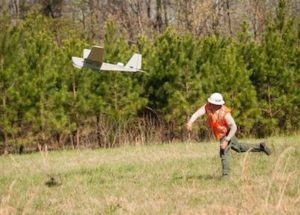 Drones have sparked a revolution within the energy sector as utilities deploy unmanned aircraft to save money and lives on hazardous, expensive tasks such as power-line and wind turbine inspections.
Drones have sparked a revolution within the energy sector as utilities deploy unmanned aircraft to save money and lives on hazardous, expensive tasks such as power-line and wind turbine inspections.
Two recent developments in the drone world clearly demonstrate this growing trend. In Europe, a business consortium is developing a new inspection system for wind turbines that could lead to a completely autonomous process.
EIT Digital, a partnership of more than 130 European corporations, start-ups, universities and research institutes, has launched Cloud4Drones, a platform that integrates a “centralized data harvesting platform, prototype hardware platform with on-board software to be deployed on the drone, and a mission control tool made of a collection of tools aiding the user to design missions and foresee them prior the operation.”
“[The program] is the first step towards the evolution of drones as autonomous or self-driving drones,” said Internet of Things Solution Manager Maurizio Griva in an EIT press release. “The digitalization of drone services and their connection to cloud computing is the essential first step for the mature adoption of this technology.”
According to a recent Deloitte report, drones are capable of inspecting 15 – 20 wind turbines per day and make a significant dent in the estimated $2-billion annual cost Europe spends currently on turbine inspections.
In the U.S., a team comprised of AeroVironment, Dominion Virginia Power, the Mid-Atlantic Aviation Partnership last week tested BVLOS powerline inspections using a satellite network and AeroVironment’s Puma, a military-grade, fixed wing drone.
“I’ve seen demonstrations dozens of times,” U.S. Sen. Mark Warner (D-VA) said in an AUVSI report. “In the last couple of years I’ve seen this evolution. And kind of the Holy Grail has always been beyond line of sight, and I saw my first beyond line of sight today.”
According to network service provider Ligado, the test included use of an augmented Wi-Fi signal with a range of up to 10 kilometers followed by a 5 mhz licensed spectrum with a range out to 23 kilometers. Ligado’s satellite test used a SkyTerra 1 22-meter reflector-based antenna.
According to AUVSI, Warner used the demo as a pitch to convince California-based AeroVironment to move drone production from “a very high expense state to a pro-business state like Virginia.”
Jason is a longstanding contributor to DroneLife with an avid interest in all things tech. He focuses on anti-drone technologies and the public safety sector; police, fire, and search and rescue.
Beginning his career as a journalist in 1996, Jason has since written and edited thousands of engaging news articles, blog posts, press releases and online content.
Email Jason
TWITTER:@JasonPReagan
Subscribe to DroneLife here.







We absolutely love your blog and find the majority of your post’s to be precisely what I’m
looking for. Do you offer guest writers to write
content to suit your needs? I wouldn’t mind producing a post or elaborating on a number of the subjects you write about here.
Again, awesome website!
barcelona drakt barn